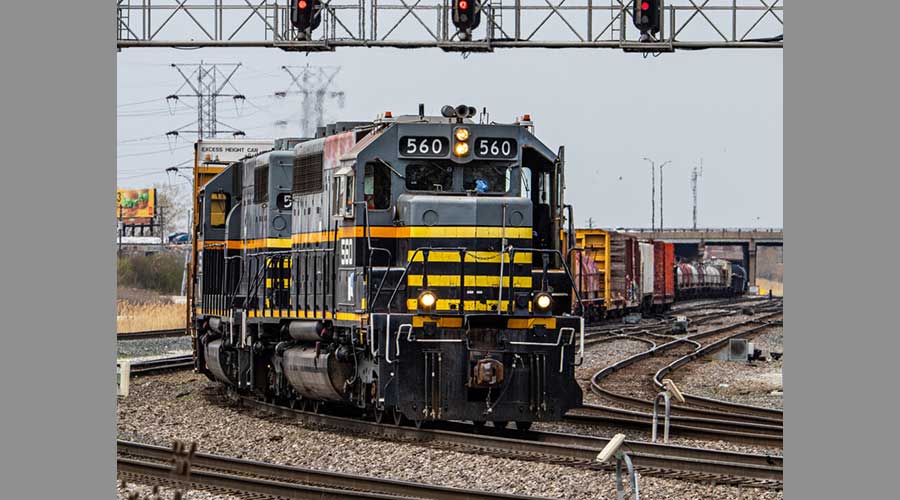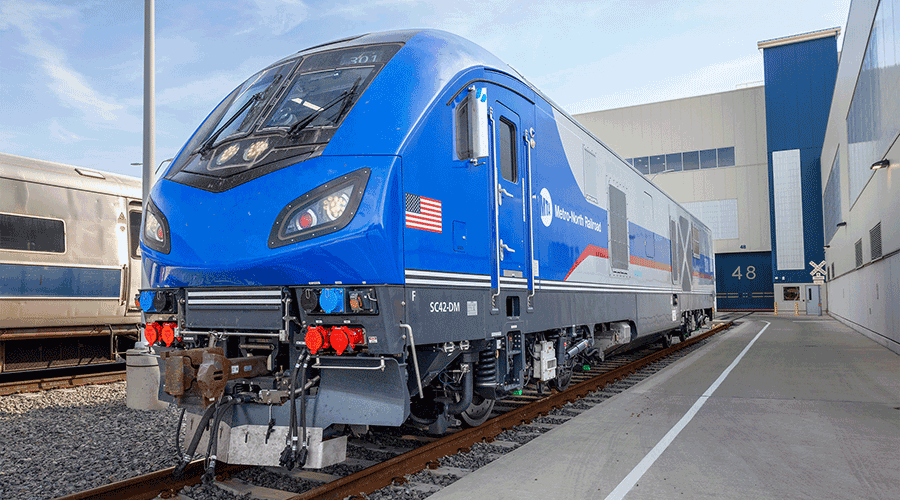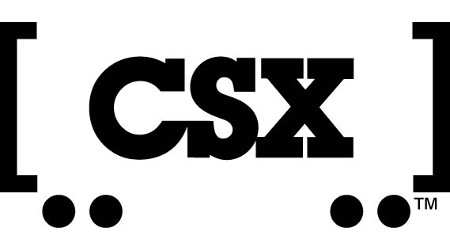Newsletter Sign Up
Stay updated on news, articles and information for the rail industry
Stay updated on news, articles and information for the rail industry
RAIL EMPLOYMENT & NOTICES
Rail News Home
Financials
Rail News: Financials

7/27/2011
Rail News: Financials
Five financial records, high-60s operating ratio color NS' results

advertisement
Norfolk Southern Corp. set five financial records in the second quarter: three 2Q bests and two all-time high-water marks.
Diluted earnings per share soared 50 percent to an all-time record $1.56; net income jumped 42 percent to an all-time high $557 million; railway operating revenue rose 18 percent to a 2Q record $2.9 billion; income from railway operations climbed 19 percent to a 2Q best $875 million; and the operating ratio improved 0.3 points to a 2Q record 69.5 compared with second-quarter 2010 results. Analysts polled by Thomson Reuters had expected earnings of $1.29 per share and revenue of $2.75 billion. In addition, volume rose 4 percent to 1.8 million units and revenue per unit increased 14 percent to $1,604.
“Norfolk Southern had a very strong quarter in almost every respect,” said Chairman, President and Chief Executive Officer Wick Moorman during an earnings teleconference and webcast yesterday. “And we have set a firm foundation in place from which to drive even stronger performance in the future.”
Continued economic recovery, favorable global trade and stronger manufacturing output coupled with ongoing new business development helped NS produce its second-highest revenue quarter ever, said Executive Vice President and Chief Marketing Officer Don Seale. Coal revenue jumped 28 percent to $893 million, intermodal revenue climbed 20 percent to $540 million and general merchandise revenue rose 12 percent to $1.4 billion — even though volume declined 2 percent — compared with second-quarter 2010 figures.
Strong intermodal gains were led by the domestic business; domestic volume increased 15 percent primarily because of highway conversions as truck capacity tightened in the marketplace, said Seale.
“Of our total domestic increase for the quarter, we estimate that 70 percent came from local business east of the Mississippi, which was up 18 percent, with the remaining 30 percent from traditional interline business … which increased by 11 percent,” he said.
However, railway operating expenses climbed 17 percent year over year to $2 billion primarily because of higher fuel and compensation and benefits costs. Fuel expenses skyrocketed 60 percent to $412 million as the average price per gallon soared 45 percent to $3.26. Compensation and benefits expenses rose 10 percent to $739 million.
Although economic slowing was evident in some of NS’ business groups in the second quarter, the senior team remains optimistic, as do most economists, about the second half of the year in terms of the recovery and improved business conditions, said Moorman.
“Over the long term, we believe that offering a superior level of rail service, driven by superior assets and infrastructure, along with best-in-class operating systems, practices and people, is the way to drive superior returns for our owners,” he said. “Within the context of the overall economy, we can and will continue to drive volume growth, while pricing our superior service at levels that fully reflect its value in the marketplace.”
— Jeff Stagl
Diluted earnings per share soared 50 percent to an all-time record $1.56; net income jumped 42 percent to an all-time high $557 million; railway operating revenue rose 18 percent to a 2Q record $2.9 billion; income from railway operations climbed 19 percent to a 2Q best $875 million; and the operating ratio improved 0.3 points to a 2Q record 69.5 compared with second-quarter 2010 results. Analysts polled by Thomson Reuters had expected earnings of $1.29 per share and revenue of $2.75 billion. In addition, volume rose 4 percent to 1.8 million units and revenue per unit increased 14 percent to $1,604.
“Norfolk Southern had a very strong quarter in almost every respect,” said Chairman, President and Chief Executive Officer Wick Moorman during an earnings teleconference and webcast yesterday. “And we have set a firm foundation in place from which to drive even stronger performance in the future.”
Continued economic recovery, favorable global trade and stronger manufacturing output coupled with ongoing new business development helped NS produce its second-highest revenue quarter ever, said Executive Vice President and Chief Marketing Officer Don Seale. Coal revenue jumped 28 percent to $893 million, intermodal revenue climbed 20 percent to $540 million and general merchandise revenue rose 12 percent to $1.4 billion — even though volume declined 2 percent — compared with second-quarter 2010 figures.
Strong intermodal gains were led by the domestic business; domestic volume increased 15 percent primarily because of highway conversions as truck capacity tightened in the marketplace, said Seale.
“Of our total domestic increase for the quarter, we estimate that 70 percent came from local business east of the Mississippi, which was up 18 percent, with the remaining 30 percent from traditional interline business … which increased by 11 percent,” he said.
However, railway operating expenses climbed 17 percent year over year to $2 billion primarily because of higher fuel and compensation and benefits costs. Fuel expenses skyrocketed 60 percent to $412 million as the average price per gallon soared 45 percent to $3.26. Compensation and benefits expenses rose 10 percent to $739 million.
Although economic slowing was evident in some of NS’ business groups in the second quarter, the senior team remains optimistic, as do most economists, about the second half of the year in terms of the recovery and improved business conditions, said Moorman.
“Over the long term, we believe that offering a superior level of rail service, driven by superior assets and infrastructure, along with best-in-class operating systems, practices and people, is the way to drive superior returns for our owners,” he said. “Within the context of the overall economy, we can and will continue to drive volume growth, while pricing our superior service at levels that fully reflect its value in the marketplace.”
— Jeff Stagl


 2025 MOW Spending Report: Passenger-rail programs
2025 MOW Spending Report: Passenger-rail programs
 Gardner steps down as Amtrak CEO
Gardner steps down as Amtrak CEO
 Guest comment: Oliver Wyman’s David Hunt
Guest comment: Oliver Wyman’s David Hunt
 Women of Influence in Rail eBook
Women of Influence in Rail eBook
 railPrime
railPrime







